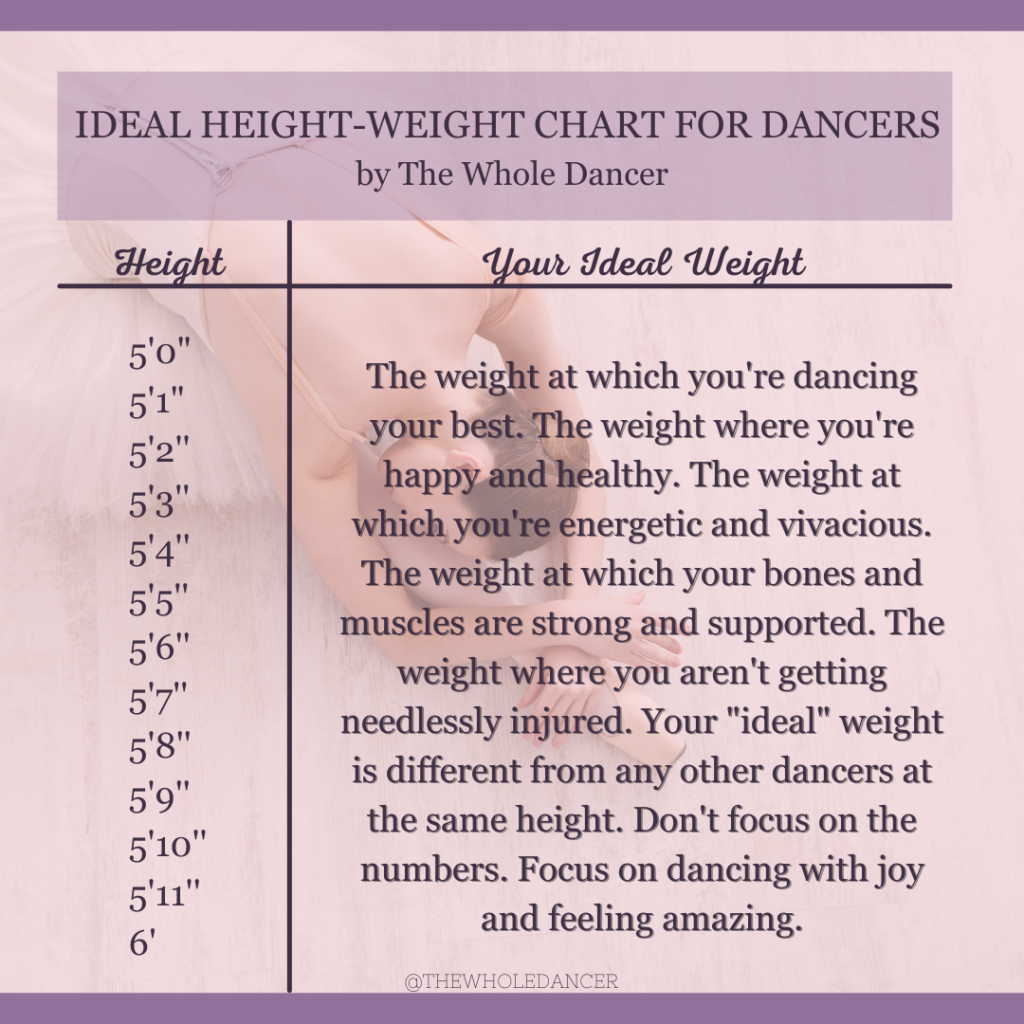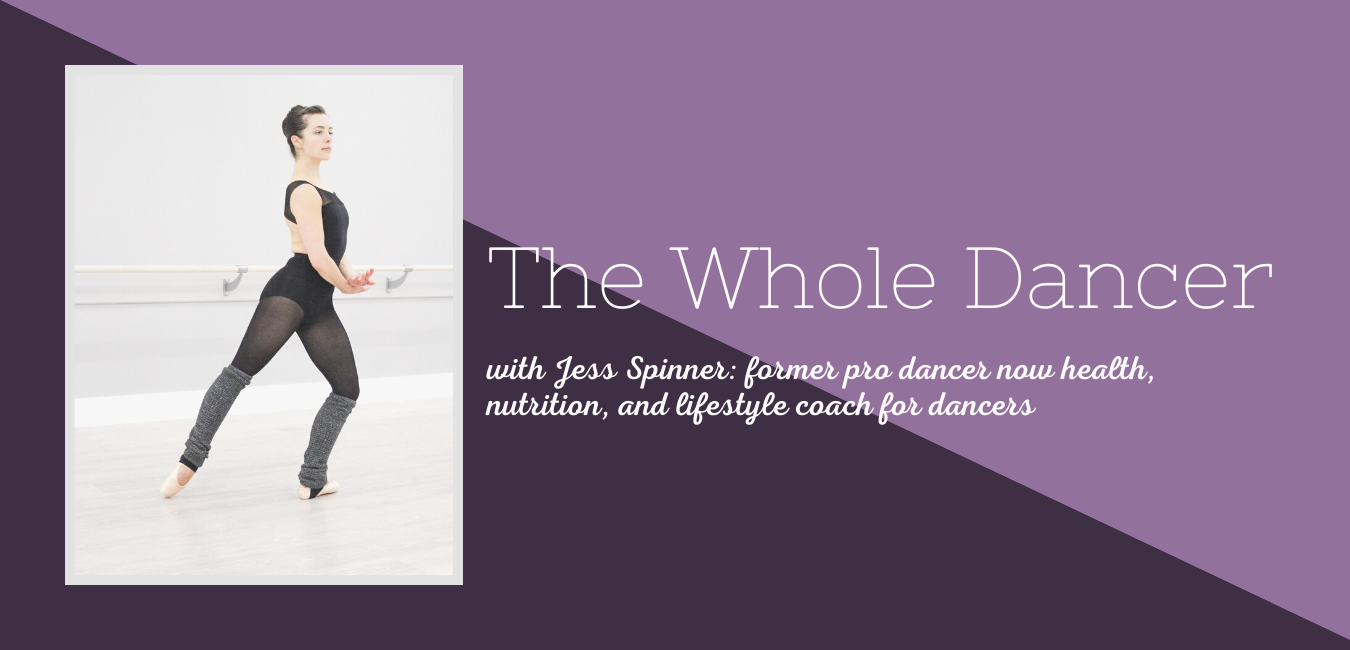This Ideal Height & Weight Chart is for
Aspiring and Professional Dancers
and applies to anyone who wishes to dance.

I recently gave my group coaching clients in The Dancers’ Best Body Program some unconventional advice when it comes to putting your weight on your resume-guess your weight if you don’t know it. If putting the actual number on there makes you unhappy, put any number you want or better yet, leave it off completely (unless they explicitly ask for it).
Most of my clients would have to guess anyway because they no longer weigh themselves. At least not regularly. When you don’t weigh yourself, you’re better able to make food choices based on your true wants and needs. If you struggle with an attachment to the scale, here are 7 reasons to ditch your scale.
There’s really no reason for ballet companies to ask for your weight…
You can stand next to 5 other dancers, all the same height, all the same weight and you would each look different. Weight shows differently on every single body.
The argument that “companies need that information so they can match dancers up with partners” simply doesn’t hold up. Do companies ask men to list how much weight they can press? No. And I’m sure there are plenty of men who have no idea.
When dancers get into a rehearsal together, people are usually matched up for partnering sections based on height. If, you get a dancer in a role where the partnering doesn’t seem safe based on weight, you may need to make adjustments either to the choreography or the casting.
Artistic Directors should be able to decide based on watching a dancer dance, if she’s a good fit for their company.
Part of their consideration might in fact be body shape or size. However, that’s something one can assess based on looking at a dancer without knowing what shows up on her scale. Dancers are already required to wear a leotard and tights without anything else in most auditions. The lines and shapes each dancer can make with their bodies are visible.
Letting go of the weight listing on a resume will allow many dancers to show up with less doubt and more confidence. They’ll be more fully themselves, and can fully share their gifts and potential.
For dancers, here’s the best advice: release your attachment to the number, and ditch your scale.
By removing the obsession with numbers you’ll be able to focus on what really matters: how you feel in your body. Focus on the joy of movement and how great it feels to dance with energy from adequately nourishing yourself. If ditching your scale allows you to put more attention on your technical advancement, it’s definitely time to do it.
Ditching your scale can help you stop obsessing over numbers and calories. It’s key to support your mental health. So many other things (e.g., weight, muscle tone, mindset, and more) can shift effortlessly when you’re in a positive mental headspace.
Your ideal weight is…

The weight at which you’re dancing your best. The weight at which you’re happy and healthy. The weight at which you’re energetic and vivacious. The weight at which your bones and muscles are strong and supported.
The weight where you avoid injury.
Your “ideal” weight is different from any other dancer at the same height. Don’t focus on the numbers, focus on dancing with joy and feeling amazing.
Put your attention on how amazing it feels to complete a pirouette instead of the size of the thighs doing the spinning.
Your ideal weight is not…
A weight that requires you to go to unhealthy extremes to maintain and it’s not some number you decided was the “perfect number” when you were 15.
It’s not a number that an artistic director, teacher, or ballet master decided you should achieve.
Let me be clear…this doesn’t mean you’re not approaching food, your body, and dancing like an athlete.
The FIRST thing that must happen for a dancer to healthfully work towards body goals is they must find peace with food and their body. If you approach either of those things from a place of negativity, self-hate, restriction, or disorder, nothing will shift in a helpful way.
Once you’re in a good mindset, you can start to make food and lifestyle shifts that will help you achieve your personal best dancer’s body. This looks different for everyone. Find a professional who you trust and connect with for support. Depending on your needs a health coach, dietitian, or nutritionist might be the right fit.
If you’re looking for a place to start, check out this post: Nutrition for Dancers. What You Really Need to Know. If you’re looking to go deeper, check out The Dancers’ Best Body Course + Group Coaching Program or Elite Best Body Coaching.
